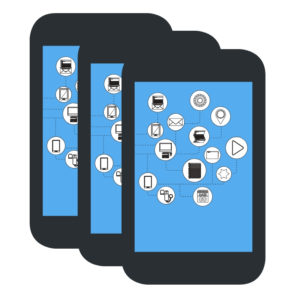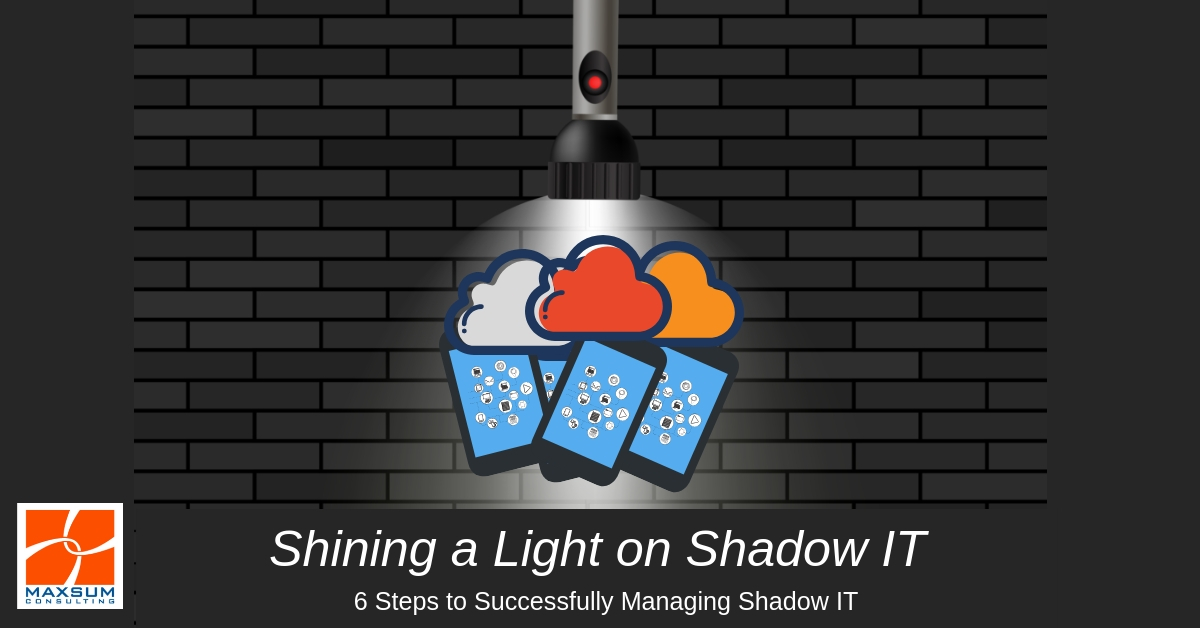[vc_row][vc_column][vc_column_text]
6 Steps to Successfully Managing Shadow IT
Are you carefully and strategically planning to make or expand your move into the cloud? STOP right there! There’s something important we think you need to know!
No matter what stage of the cloud adoption journey you think you’re at, there’s an 87% chance some of your data is already in the cloud.
 That’s right. While you’ve been carefully researching and weighing up all the pros and cons in the boardroom, ready or not, your people may have, literally, hit upload and taken your cloud journey into their own hands!
That’s right. While you’ve been carefully researching and weighing up all the pros and cons in the boardroom, ready or not, your people may have, literally, hit upload and taken your cloud journey into their own hands!
How do we know? A whopping 87% of senior managers have admitted to regularly uploading work files to a personal email or cloud account!
No way! How is that possible?
Here’s how… Cloud computing has essentially “democratised” access to enterprise-grade technology – we say it all the time, and this is a great thing! Today’s best-in class solutions can be delivered to everyday end users via the wonders of highly sophisticated Software as a Service (SaaS) applications and associated cloud services. Your people might not even realise it, but they’re already most likely using a host of domestic grade SaaS apps to create, store, share and communicate on their personal devices, and, naturally, they want demand the same ease and flexibility at work. So, they take matters into their own hands, and before you know it: You’ve got Shadow IT!
Shadow IT under the spotlight
 Shadow IT refers to software or hardware adopted or installed by end users without the explicit consent or knowledge of your IT department. Typical examples of Shadow IT might include instant messaging apps, domestic-grade cloud/file sharing services, off-the-shelf software downloaded, purchased or installed by users, mobile phones, laptops, tablets, USB storage devices… you get the picture! Think Dropbox, Google Drive, iCloud, photo or document editing or design tools, etc.
Shadow IT refers to software or hardware adopted or installed by end users without the explicit consent or knowledge of your IT department. Typical examples of Shadow IT might include instant messaging apps, domestic-grade cloud/file sharing services, off-the-shelf software downloaded, purchased or installed by users, mobile phones, laptops, tablets, USB storage devices… you get the picture! Think Dropbox, Google Drive, iCloud, photo or document editing or design tools, etc.
Why you should be thinking about Shadow IT in your business
Ultimately, Shadow IT is not adopted by users with malicious intent. They really just want to be more productive, collaborate more effectively and manage their data and workloads better. But allowing Shadow IT to run unchecked will at some point, catch you out. Shadow IT exposes your business data, systems and intellectual property to:
- Security incidents and data breaches
- Legal and compliance issues
- Unencrypted data transmission and storage
- Sub-standard back-up and data loss
- Poor password or authentication management, if any!
“But we have business systems in place. Why would our employees be using Shadow IT?”
Short answer: Because they can! And often, it’s easier than what you’ve got on offer for them.
Long answer (In 3 parts!)
Because everyone’s BYODing it
Thanks to the explosion in the Bring Your Own Device (BYOD) trend in the workplace, many workers are opting to, or even actually required to, use their own devices and software for work purposes. This means that all their personal apps – the ones they love, use every day and seem easier to use than yours, have made their way into your workplace by default. Your people love them and use them at work because they already know how to use them, and they can manage updates and changes at their own discretion “hassle-free”.
Because your…business… systems…feel….too..…slow……
The flip side of BYOD is that if people are used to using their own apps and devices, they often then find themselves frustrated or restricted by the technology provided by their organisation, which might be different, have more policies or controls around it, or require training. Curbing a wildfire spread of shadow IT, means offering more than just fit-for-purpose systems, processes and technologies. We’re talking solutions that are both purpose-fit and offer the faster, more efficient user experience your people are used to elsewhere. Then you basically eliminate the need them to resort to sourcing their own solutions.
Because you’ve got a “Department of No”
Ever raised your frustrations with outdated technology or seen an opportunity to implement something new and exciting only to be told by IT “we can’t support that”? Even when it’s not an outright “no”, it’s often only a tentative yes followed by a lengthy process of testing and evaluation. In the meantime, your team has set about finding a work-around, which may or may not be something you would sanction. Worse still, they’ve probably lost their drive to bring any new ideas to the table in the future!
Here’s a bit of a scary stat (especially in light of all the new data security regulation changes at play!) Some 23% of employees believe their departments can manage security without IT’s help.
How to mitigate the risk of Shadow IT
Let’s be real; it’s probably impossible to eradicate Shadow IT entirely from your business, but the old mantra still comes into play: You can’t manage what you can’t measure. Implementing visibility, control and protection around the devices and services that are being used in your organisation will ensure you can run the right checks and balances against your security, data privacy requirements and policies, as well as productivity goals. Having a clear framework around what is and isn’t acceptable also gives you a platform for responding to agile workplace demands and a process for vetting or fast-tracking new ideas or requests.
The 6 Steps to Successfully Managing Shadow IT in your Organisation!
- Understand the issue and the risks (If you’re still with us, you’re already on your way now!)
- Understand the value of your data, where and how it is stored, and how vulnerable it may be.
- Implement company policies that set the standard for your organisation. These might include SaaS, BYOD, Acceptable Use or Digital Rights Management policies.
- Communicate with and educate your employees about the importance of security on both a personal and business level.
- Implement visibility, control and protection technologies to help you monitor, manage and mitigate Shadow IT. Examples of this include IT discovery and audit tools, device and network monitoring tools, Mobile Device Management (MDM) solutions, and Multifactor Authentication (MFA)…just to name a few.
- Create a regular forum and clear channels where employees feel free to explain what they need, put new ideas forward, or champion change in your organisation.
At Maxsum, we’re committed to ensuring your business technology is accessible, recoverable and secure whenever and wherever you need to work. Talk to us about the business technology tools that can give you the visibility, control and protection you need to mitigate security risks in your organisation today!
 [/vc_column_text][/vc_column][/vc_row][vc_row css=”.vc_custom_1542528350576{margin-top: 30px !important;}”][vc_column][vc_column_text css=”.vc_custom_1542528305054{padding-bottom: 20px !important;}”]
[/vc_column_text][/vc_column][/vc_row][vc_row css=”.vc_custom_1542528350576{margin-top: 30px !important;}”][vc_column][vc_column_text css=”.vc_custom_1542528305054{padding-bottom: 20px !important;}”]
Want to read more?
[/vc_column_text][vc_column_text][display-posts id=”1955, 1796,1420″ include_excerpt=”true” image_size=”blog-feature”][/vc_column_text][/vc_column][/vc_row]

